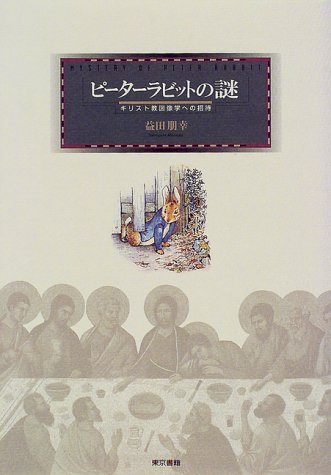6 0 0 0 OA カッパドキアの絵画と銘文 -鑑賞者に関する情報源として-
- 著者
- ジョリヴェ=レヴィ カトリーヌ 益田 朋幸
- 出版者
- 早稲田大学総合人文科学研究センター
- 雑誌
- 早稲田大学総合人文科学研究センター研究誌 (ISSN:21878307)
- 巻号頁・発行日
- vol.4, pp.303-313, 2016-10-21
2 0 0 0 ピーターラビットの謎 : キリスト教図像学への招待
2 0 0 0 仏陀の顔をしたキリスト--仏教美術西漸に関する一考察
- 著者
- 益田 朋幸
- 出版者
- 毎日新聞社
- 雑誌
- 仏教芸術 (ISSN:00042889)
- 巻号頁・発行日
- no.220, pp.p15-32, 1995-05
2 0 0 0 IR キリスト・パントクラトールのコンテクスト--中期ビザンティン聖堂装飾プログラム論
- 著者
- 益田 朋幸
- 出版者
- 早稲田大学大学院文学研究科
- 雑誌
- 早稲田大学大学院文学研究科紀要 第3分冊 (ISSN:13417533)
- 巻号頁・発行日
- vol.48, pp.39-54, 2002
- 著者
- 益田 朋幸
- 出版者
- 早稲田大学ヨーロッパ中世・ルネサンス研究所
- 雑誌
- エクフラシス (ISSN:2186005X)
- 巻号頁・発行日
- no.1, pp.70-81, 2011
- 著者
- 益田 朋幸
- 出版者
- 美学会
- 雑誌
- 美学 (ISSN:05200962)
- 巻号頁・発行日
- vol.63, no.1, pp.182, 2012-06-30 (Released:2017-05-22)
1 0 0 0 OA 古代・中世地中海世界における宗教空間と社会変動-トロス遺跡聖堂遺構の発掘調査
- 著者
- 浦野 聡 師尾 晶子 太記 祐一 草生 久嗣 中谷 功治 小笠原 弘幸 深津 行徳 益田 朋幸 村田 光司 田中 咲子 松崎 哲也 奈良澤 由美 KORKUT Taner
- 出版者
- 立教大学
- 雑誌
- 基盤研究(B)
- 巻号頁・発行日
- 2012-04-01
古代から中世にかけての地中海世界における聖域空間と社会の関係の変動を具体的に調査するため、リキア地方(トルコ南西部)のトロス遺跡の司教座聖堂に焦点を定め、発掘調査を行った。この聖堂は、古代の都市の主聖域に建造されており、それ以前の神殿や聖域との関係で重要な知見を得られることが期待されたが、キリスト教の国教化から50年ほど経った五世紀の半ばには完成し、その後、11世紀に至るまで、隣接する旧都市の主神殿クロノス神殿までの空間に教会付属の工房区域が形成され、都市の手工業の中心となったことが明らかにされた。
1 0 0 0 OA ビザンティン聖堂装飾における中軸の図像
- 著者
- 益田 朋幸
- 出版者
- 早稲田大学ヨーロッパ中世・ルネサンス研究所
- 雑誌
- エクフラシス : ヨーロッパ文化研究 (ISSN:2186005X)
- 巻号頁・発行日
- vol.2, pp.58-78, 2012-03-20
1 0 0 0 OA キリスト・パントクラトールのコンテクスト-中期ビザンティン聖堂装飾プログラム論-
1 0 0 0 OA ビザンティン写本挿絵におけるヨハネ福音書冒頭部分の絵画化
- 著者
- 益田 朋幸
- 出版者
- 美学会
- 雑誌
- 美學 (ISSN:05200962)
- 巻号頁・発行日
- vol.43, no.4, pp.12-22, 1993-03-31
How did the Byzantine illuminators interpret and visualize the beginning phrases of John's Gospel? The aim of this article is, through investigations of Byzantine Gospels and lectionaries from the eleventh century, to establish the correspondence between text and image. The iconographic types can be grouped as follows : a. John the Evangelist (Morgan 639 ; Venice, Hellenic Institute Cod. gr. 2) ; b. Christ Emmanuel (Athens 68) ; c. Christ Pantocrator (Athens 68 and 190) ; d. the Ancient of Days (Istanbul, Patriarchate 8) ; e. Moses and the Crucifixion (Paris. suppl. gr. 27). The Cod. 68 at Athens adopts two aspects of Christ, Emmanuel and Pantocrator. The Cod. Paris. gr. 64 can be placed as the combination of the types c-d, and the Cod. 587 of the Dionysiou Monastery on Mt. Athos as that of the types b-d. If the hypothesis that the two manuscripts, Paris. gr. 64 and Dionysiou 587, are the products of the same atelier is accepted, we can assume that in an atelier of the eleventh-century Constantinople, three types of Christ (Pantocrator, Emmanuel and the Ancient of Days) were used as the illustration of John's first verses. Perhaps John's headpiece in Paris. gr. 74 is copied from a lost lectionary with the frontispiece representing three types of Christ.


